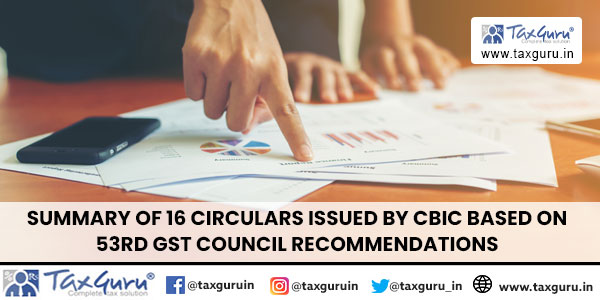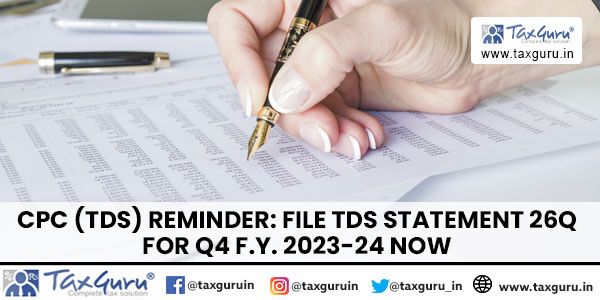Analysis of G.S.R. 61(E) – Companies (Listing of Equity Shares in Permissible Jurisdictions) Rules, 2024: A Comprehensive Legal Study
In this academic article, the regulatory structure described in G.S.R. 61(E)—that is, the Companies (Listing of Equity Shares in Permissible Jurisdictions) Rules, 2024—is examined in detail. The review includes a detailed study of key clauses, the regulatory framework, and implications present in the policies governing the incorporation of equity shares in eligible jurisdictions.
The Companies (Listing of Equity Shares in Permissible Jurisdictions) Rules, 2024, introduced through Government Notification G.S.R. 61(E), represent a pivotal development in India’s regulatory framework for corporate governance and securities listing. Rooted in the historical evolution of regulations governing equity shares listing, these rules signify a strategic response to the imperatives of globalization and the need to provide Indian companies with a structured avenue for cross-border listings. Aligned with India’s overarching legal framework, particularly the Companies Act, the rules aim to strike a delicate balance between facilitating global market access and safeguarding domestic stakeholders’ interests. By streamlining the cross-border listing process and promoting adherence to international best practices, these rules position India as an active participant in the integrated landscape of international capital markets, contributing to the nation’s economic resilience and global competitiveness.
Provision 3 – Applicability: This provision establishes the scope of the rules, applying to both unlisted and listed public companies. The inclusion of listed companies is subject to adherence to regulations prescribed by the Securities and Exchange Board or the Authority, emphasizing regulatory compliance. Legal arguments supporting this provision revolve around the need for uniformity in regulatory standards for companies engaging in cross-border listings, ensuring transparency and investor protection.
Provision 4(1) – Listing on Permitted Stock Exchanges: This clause empowers unlisted public companies meeting specified criteria to issue equity shares for listing on stock exchanges in permissible jurisdictions. The legal argument here is based on promoting capital market development and providing companies access to a broader investor base. By allowing existing shareholders to offer equity shares for listing, it facilitates liquidity and enhances market efficiency. The provision also promotes the free flow of capital across borders, fostering economic growth.
Provision 4(2) – Compliance with the Scheme: This subsection mandates compliance with the Scheme’s requirements for companies issuing equity shares. Legal arguments supporting this stipulation emphasize the need for a standardized framework ensuring fairness, transparency, and investor confidence. Adherence to the Scheme safeguards against potential market abuses and aligns with international best practices in securities regulation.
Provision 4(3) – Dual Listing Requirements: This subsection outlines conditions for companies intending to list their equity shares on both permissible jurisdiction exchanges and recognized Indian stock exchanges. The legal argument here is based on the need to harmonize dual listings while ensuring compliance with the Securities Contracts (Regulation) Act, 1956. The Securities and Exchange Board of India’s specified conditions serve to maintain regulatory consistency and protect the interests of domestic investors.
Provision 4(4) – Filing of Prospectus: This clause mandates the filing of the prospectus using e-Form LEAP-1 within seven days of finalization. The legal rationale supports timely and transparent disclosure, a cornerstone of securities regulation. The prospectus filing requirement ensures that investors are provided with accurate and up-to-date information, fostering informed decision-making. Non-compliance may result in legal consequences, emphasizing the significance of adherence to procedural requirements.
Provision 4(5) – Compliance with Indian Accounting Standards: This subsection mandates compliance with Indian Accounting Standards post-listing. The legal argument here emphasizes the importance of standardized financial reporting, enhancing comparability and reliability. Companies are required to adhere to the Annexure to the Companies (Indian Accounting Standards) Rules, 2015, ensuring consistency with global accounting practices. Compliance with additional conditions set by the securities regulator or stock exchange reinforces the commitment to maintaining high regulatory standards.
Provision 5 – Ineligibility Criteria: This provision outlines conditions rendering a company ineligible for listing, including defaults, winding-up applications, and filing defaults. Legal arguments supporting this provision focus on safeguarding the interests of investors and maintaining market integrity. Conditions such as defaults in payment and filing reflect financial prudence, ensuring that companies seeking cross-border listings have a robust financial track record. The provision encourages responsible corporate behavior and mitigates risks associated with financially unstable entities.
Future Predicted Course: For Provision 3, foreseeing the future course involves continuous monitoring and potential updates to ensure alignment with evolving regulatory standards. It is anticipated that amendments may be introduced to enhance regulatory clarity and address emerging challenges in the context of cross-border listings. The ongoing collaboration with the Securities and Exchange Board or the Authority is crucial for staying abreast of regulatory developments and maintaining the rules’ relevance.
In the case of Provision 4(1), the trajectory involves fostering a dynamic capital market environment. Future developments may focus on refining the specified criteria to strike an optimal balance between market accessibility and investor protection. Enhancements in the criteria could be anticipated to accommodate changes in market dynamics and align with international practices, promoting sustained capital market development.
Regarding Provision 4(2), the future course entails periodic reviews and potential modifications to the Scheme’s requirements. Regulatory authorities may explore avenues to enhance the efficacy of the Scheme, ensuring it remains a robust framework for fair, transparent, and investor-friendly cross-border listings. The evolution of the Scheme will likely align with global regulatory trends to maintain international competitiveness.
In the context of Provision 4(3), the future trajectory involves ongoing efforts to harmonize dual listings seamlessly. Regulatory authorities may consider refining conditions to adapt to changing market scenarios and technology advancements. Continuous collaboration with recognized Indian stock exchanges and periodic reassessment of conditions will be instrumental in ensuring regulatory consistency and investor protection.
For Provision 4(4), the future course includes potential refinements in e-Form LEAP-1 and prospectus filing processes. Technological advancements may drive updates to streamline filing procedures and enhance transparency. Continuous dialogue with stakeholders will be essential for identifying areas of improvement, ensuring efficient compliance, and addressing any emerging challenges in the filing framework.
In the case of Provision 4(5), the future trajectory involves a vigilant stance on market integrity. Regulatory authorities may consider periodic assessments of ineligibility criteria to adapt to evolving financial landscapes. Continuous scrutiny of default scenarios and adherence to financial reporting obligations will be paramount. Authorities may explore mechanisms for swift resolution of defaults and reinforce stringent eligibility standards.
Advantages and Disadvantages:
Provision 3’s advantage lies in promoting uniformity, transparency, and investor protection. However, a potential disadvantage could be the need for companies to navigate evolving regulations, requiring constant vigilance and adaptation to remain compliant.
For Provision 4(1), the advantage is the promotion of capital market development and increased access to a broader investor base. However, potential disadvantages may include the challenge of determining optimal criteria, balancing market efficiency with investor protection, and adapting to changing market dynamics.
Provision 4(2) offers advantages in ensuring fairness, transparency, and investor confidence. The standardized framework provided by the Scheme enhances market integrity. However, potential disadvantages may include the need for companies to navigate complex compliance requirements, which could be perceived as burdensome.
Regarding Provision 4(3), the advantage lies in harmonizing dual listings, fostering international competitiveness. However, challenges may arise in determining conditions that strike an optimal balance between regulatory consistency and flexibility.
Provision 4(4) provides advantages through timely and transparent disclosure, ensuring informed decision-making. However, potential disadvantages include the need for companies to meet strict filing deadlines, with non-compliance leading to legal consequences.
For Provision 4(5), the advantage is in safeguarding investor interests and market integrity by establishing stringent eligibility criteria. A potential disadvantage may be the impact on companies with historical defaults, necessitating a careful balance between investor protection and providing avenues for rehabilitation. These analyses contribute to a comprehensive understanding of the legal landscape, providing insights for practitioners, legal scholars, and corporate professionals engaging in cross-border listings.
Conclusion
In conclusion, the analysis of G.S.R. 61(E) – Companies (Listing of Equity Shares in Permissible Jurisdictions) Rules, 2024 reveals a meticulous framework that aims to facilitate cross-border listings while maintaining stringent regulatory oversight. The provisions, from Applicability to Ineligibility Criteria, collectively construct a balanced approach that prioritizes transparency, investor protection, and market integrity. The provisions underscore the Indian government’s commitment to fostering a conducive environment for companies to access global capital markets.
Author’s Input
As the author, the exploration of these rules has provided valuable insights into the intricacies of cross-border listings in the Indian regulatory landscape. The forward-thinking approach embedded in the rules reflects a recognition of the evolving dynamics of international financial markets. While the provisions appear well-structured, future considerations should encompass periodic reviews to ensure their adaptability to emerging market trends. The advantages of promoting capital market development and safeguarding investor interests are commendable. However, there is a need for a nuanced approach to balance regulatory requirements with the practical challenges faced by companies engaging in cross-border listings. The future trajectory anticipates continual collaboration between regulatory authorities and market participants. Technological advancements, particularly in e-filing processes, should be embraced to streamline compliance and enhance transparency. Striking the right balance between regulatory stringency and facilitating market access will be pivotal for the rules’ long-term effectiveness.
In conclusion, the Companies (Listing of Equity Shares in Permissible Jurisdictions) Rules, 2024, represent a significant step towards aligning India’s capital market regulations with global standards. The author looks forward to observing how these rules unfold in practice, their impact on cross-border listings, and subsequent amendments that may arise to address evolving market dynamics.

























